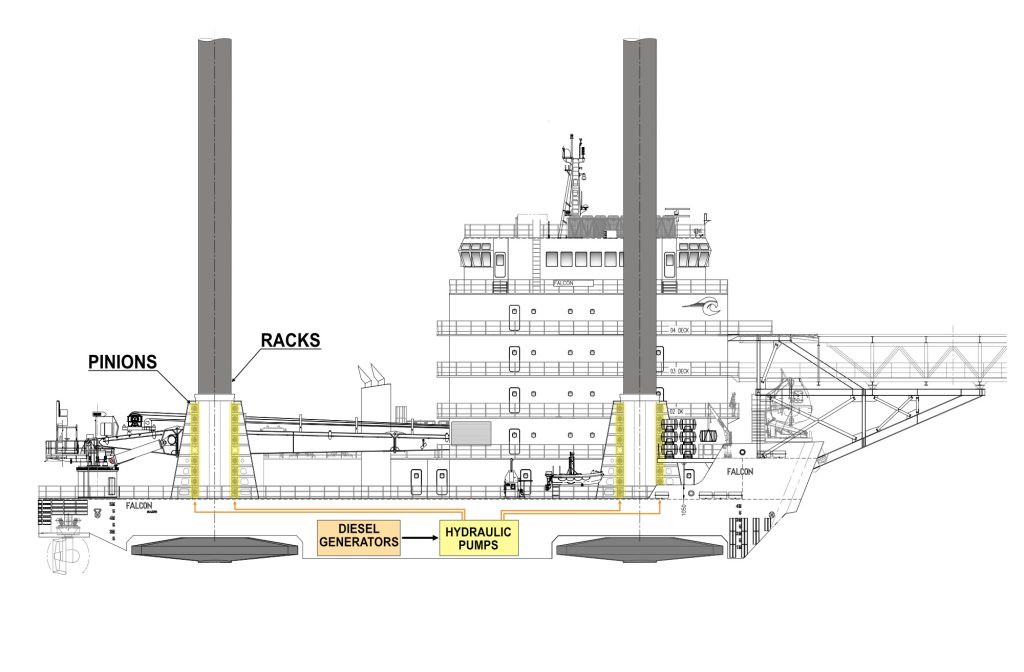The jacking system elevates the hull of the jackup using the attachment points on the leg. They often also support the hull while elevated during operations and storm conditions. There have been different designs in the past, so we will mention a few of them here.
Significant features of jacking system:
- Jacking speed – speed of raising the hull. One meter per minute is considered to be fast.
- Holding capacity – maximum weight (hull, cargo and liquids) of the vessel in elevated condition.
- Jacking capacity – maximum weight which jacking system can elevate (less than holding capacity).
- Survival holding capacity – maximum weight the vessel can handle in worst case scenario.
Power Sources
- Electric jacking systems control motor speed to adjust pinion loads and the speed. When jacking, the equalizing occurs for all pinions of each leg, thus ensuring a smooth and balanced operation. This type of system is efficient and reliable.
- Hydraulic jacking systems work by maintaining the same pressure for all pinions within a leg. Despite challenges such as loss due to piping lengths, bends, and others, hydraulic systems can effectively equalize the pinion loads for all legs. This system provides a robust and durable solution.
Whether it’s the design or the power source, each type of jacking system has its unique advantages and considerations. Understanding these mechanisms is vital to ensuring the efficient operation of the jacking system. As technology advances, the industry continues to innovate and improve these systems, contributing to safer and more efficient operations.
